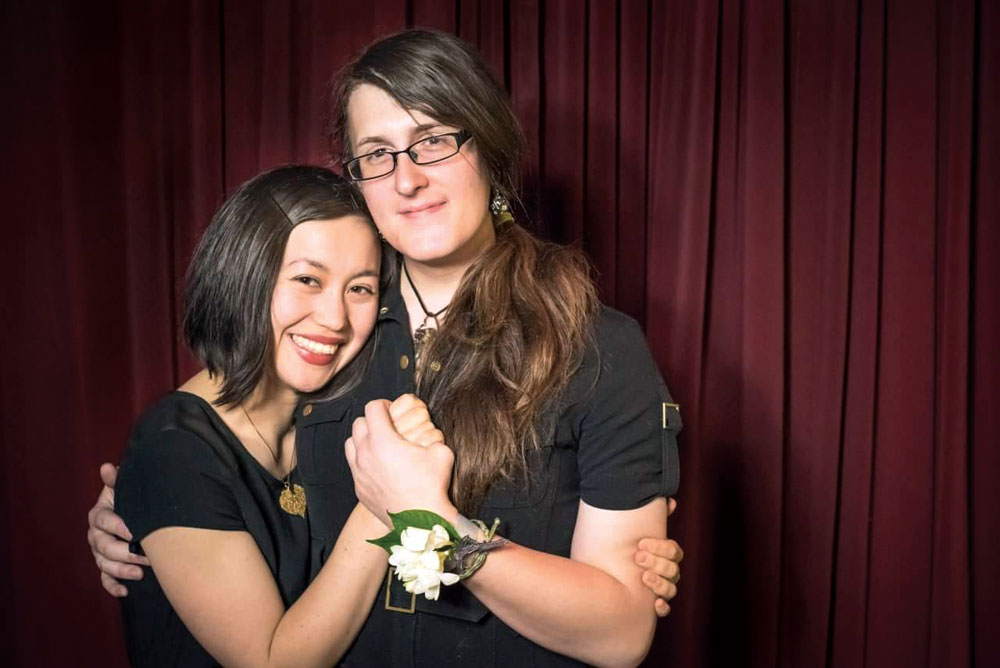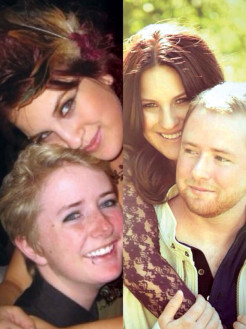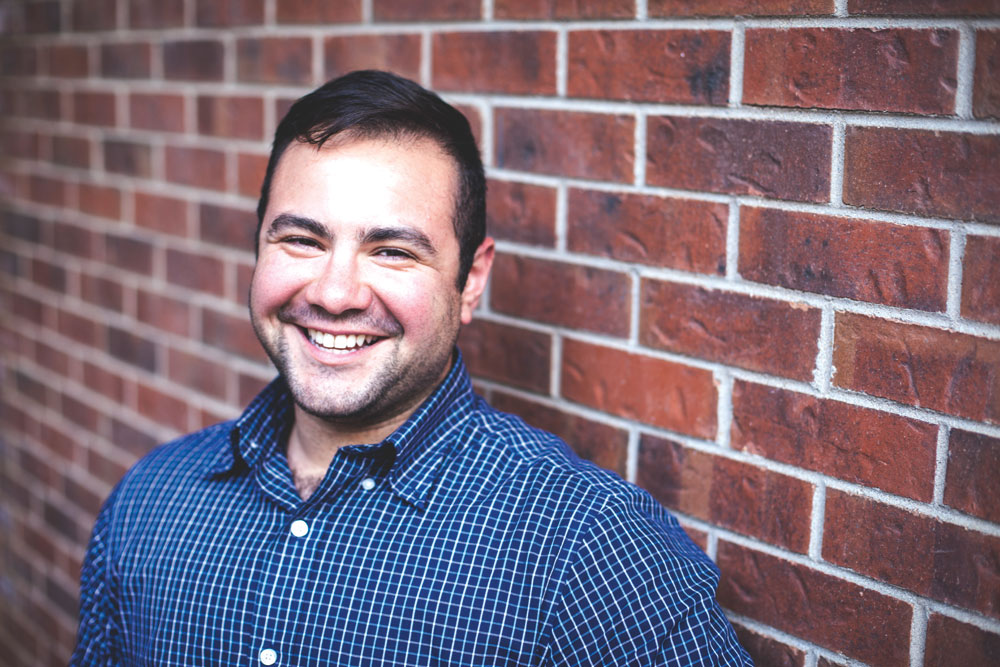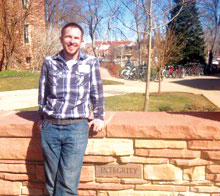Being transgender means something different to each person and there are immense differences from one person’s story to another. Here a variety of people across the spectrum.

Alexis Gray and Hana Low
Twenty-eight-year-old Alexis Gray (right) and her “wonderful and amazing” partner, Hana Low, are both transgender. Gray was born a male and during her childhood acted how she thought boys are supposed to act, never crying or showing weakness. It wasn’t until 18 she started to think she would fit better as a woman, and at 22 began her transition. In her experience as a woman, she deals with her emotions in a much healthier way. “I didn’t really do any intellectual processing of my experiences as a young boy. I’m realizing the toxic male behaviors I learned. It was like estrogen was the key that unlocked that part of my life.”
Although no transition is easy, Gray’s went relatively smooth with support from her family— “it may have been superficial support because I know they didn’t understand, but still.” Finding the right doctor who closely managed her testosterone and estrogen levels also made a huge difference in her health and overall well-being throughout the transition. Now as a woman, she has a community of supportive friends who understand her. She actively excludes judgmental people from her life and advises anyone who is judgmental: “Don’t be a jerk to people who are speaking up for themselves because it’s hard enough to do that.”
Gray works as security guard at Kaiser Permanente. In her free time, she plays Dungeons and Dragons and supports the animal liberation movement to free animals from human use. She and Low are pictured at the 2014 “Vegan Prom” at Mercury Cafe in downtown Denver.
![]()

Collin and Ariel
The right panel is a current photo of Collin Eagen and his partner, Ariel. Collin identifies as a trans man and gender queer and Ariel is cisgender and gender queer. The two met as teenagers, when Eagen still presented as a female. For the first part of their lives together they were in a lesbian relationship; they married last summer.
Although Eagen passes very well with a lot of body hair, he likes his feminine side and actively brings that out with brightly colored clothes and a higher tone of voice, which has caused him to be ostracized within the trans community. Many ask, why would you transition if you are going to act like a gay man? Upon first meeting the couple, people think they are a heterosexual couple. Then after hearing Eagen’s feminine speech, people think Ariel is dumb for marrying a gay man. “It’s very difficult to move through the world where you were once perceived as a queer couple—and we are a very proud queer couple— to then be perceived as a heterosexual couple. It’s been difficult for us,” Eagen says.
Marriage was a difficult decision for this reason—they didn’t want to appear as a heterosexual couple or take advantage of heterosexual rights (which has now changed with legal same-sex marriage). Few understand the couple like they know themselves: “Before my transition I never wanted for anything. I had privilege—a car, education, financial support. I went to the bottom of the food chain and have had to fight for everything. As difficult and heartbreaking as it has been, I am so much better for it. I am happier and have more self-worth and know myself better than most people lying on their deathbeds—and I’m 25.”
Eagen is currently a marketing intern and competes in a dangerous equestrian sport called Three Day Eventing.
![]()
![]()

Leo Kattari
As the Health Policy Manager at One Colorado, Leo Kattari, who identifies as a trans man, makes sure LGBTQIA (lesbian, gay, bisexual, transgender, queer, intersex and asexual) people have access to affordable and adequate health care. “Because we’ve seen progress pretty quickly, who knows how much longer until we become more accepting of transgender people, where the gender marker will no longer be included on driver’s licenses.”
There is very little data about transgender healthcare, but Kattari is changing that. Last year, One Colorado completed a transparency report to show the reality of trans healthcare. Eight-eight percent of Colorado physicians surveyed stated they are pretty comfortable or totally comfortable treating transgender people, but in reality very few actually know how to treat them. For example, most doctors are not well equipped to advise about hormone therapy replacement so a person wanting to begin transitioning likely has to go through multiple doctors. Transgender is now being added to medical schools and webinars for continuing education around the country.
![]()

Sam Bullington
As a women and gender studies professor at CU, Sam Bullington gets to share with his students his view of society as both a woman and a man. He has identified as transgender since 1995 but didn’t transition until 13 years later, partly because he didn’t totally want to be a man—he just didn’t want to be a woman. At the time he was teaching at the University of Missouri-Columbia and felt he owed it to his students to be a role model for living on the non-binary. He was the first transgender professor at the university.
To get access to healthcare, Bullington had to present the very stereotypical “I was born in the wrong body” story, even though it was not true for him. Bullington’s has transition had cruel companions. He lost many close friends and has been surprisingly lonely as a man. “I’m a very touchy feely person. That’s a really big part of my connection with other people and my sense of self. As a guy now, nobody touches me. I don’t touch women because that feels creepy and I don’t touch guys because I don’t want to get beat up.” In many ways he feels invisible.
Despite the challenges, Bullington does not regret transitioning. He believes he is on the planet to learn and his gender is a constant discovery.
Besides teaching, Bullington is also studying to become a shaman, or spiritual healer.



0 Comments